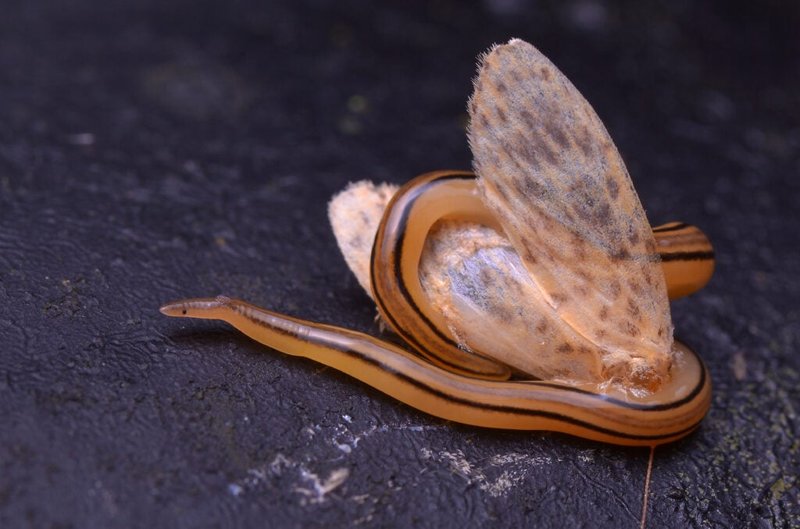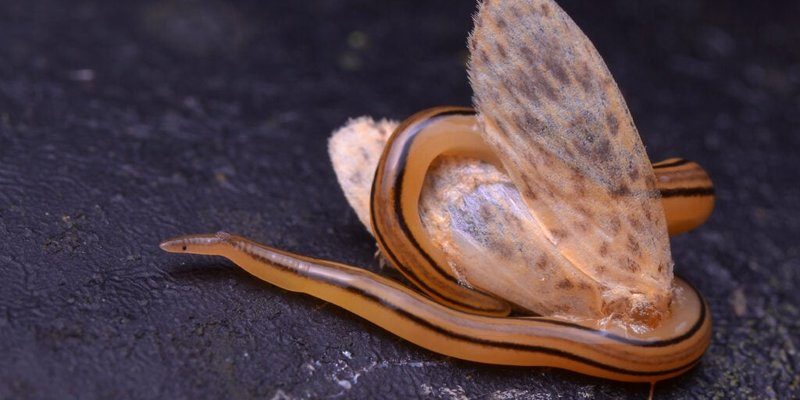
Imagine a vibrant underwater community where each type of creature plays a unique role. Just as owls can’t be everywhere at once, ribbon worms aren’t invincible. They’re part of the food web, influencing and being influenced by other marine life. So, if you’re curious about what these ribbon worms need to watch out for, let’s dive into the waters and explore their world.
What Are Ribbon Worms?
Before we get into who preys on ribbon worms, let’s take a moment to understand what they are. Ribbon worms, or **Nemertea**, are soft-bodied invertebrates known for their elongated and often colorful appearance. They can be found in various marine environments, from coastal shallows to deep ocean floors.
These worms are pretty special in the animal kingdom. They have a unique structure called a proboscis, which they use to catch prey. It’s like a secret weapon that springs out to grab unsuspecting critters. Ribbon worms can grow quite large, with some species reaching lengths of up to 30 feet! Yet despite their size, they have plenty of natural enemies lurking nearby.
Fish That Feast on Ribbon Worms
One of the primary predators of ribbon worms is various species of fish. Fish are incredibly diverse and range from small reef dwellers to larger predators. Here are a few that particularly enjoy a ribbon worm as a meal:
- Flatfish: These fish, which include flounders and soles, have a unique hunting strategy, lying flat on the ocean floor and ambushing prey. They can easily spot ribbon worms peeking out from their hiding spots.
- Wrasses: Known for their colorful bodies, wrasses are adept hunters. They often rummage through crevices looking for morsels, making ribbon worms a tasty find.
- Sculpins: With their camouflaged appearances, sculpins hide among rocks and algae, waiting to pounce on unsuspecting prey like ribbon worms.
Fish, with their sharp senses and swift movements, are a significant threat to ribbon worms. So, if you’re a ribbon worm, the ocean might feel like a dangerous place.
Crustaceans: Tiny Yet Deadly
You might think that crustaceans are too small to take on something as long as a ribbon worm, but don’t let their size fool you! Many crustaceans are opportunistic predators, and they feast on ribbon worms whenever they get the chance.
- Crab Species: Various types of crabs, like green crabs or hermit crabs, are known to scavenge and hunt for ribbon worms. Their pincers help them grab and hold onto slippery prey.
- Shrimp: Some shrimp are predatory and will actively hunt ribbon worms, especially when they’re vulnerable or exposed.
- Isopods: These little critters can often be found in marine environments, and some larger species aren’t shy about munching on ribbon worms they find.
These crustaceans, often overlooked, play a significant role in the ribbon worm’s natural enemies. They’re like stealthy ninjas of the ocean, ready to pounce!
Marine Mammals: The Top Predators
Moving a bit higher up the food chain, we find marine mammals. While they might seem unlikely to eat ribbon worms, some have developed a taste for them. For instance, certain species of seals and even larger fish-eating mammals will consume them occasionally.
- Seals: Seals are smart foragers and will sometimes dive deep to look for various seafood, including ribbon worms. If they’re feeling adventurous, they won’t hesitate to munch on a few wormy snacks.
- Sea Otters: Known for their playful antics, sea otters also have a well-rounded diet. They tend to eat a wide variety of prey, including marine invertebrates and just maybe a ribbon worm or two!
These mammals remind us that predators can come from all corners of the ocean. Who knew that such cute, furry animals were part of the ribbon worm’s world of danger?
Birds Taking Advantage of Ribbon Worms
Let’s not forget about birds! Many seabirds have a keen eye for spotting ribbon worms while they scavenge along beaches and tidal flats. These birds can be particularly crafty in finding their next meal.
- Oystercatchers: These birds are known for their sharp beaks, perfect for prying ribbon worms out of the sand and mud.
- Gulls: Gulls are often seen on shorelines searching for food. They won’t pass up a chance to snatch a ribbon worm if they can.
Birds add another layer of complexity to the food web, reminding us that ribbon worms must be careful both above and below the water.
Parasites: The Unsung Predators
Now, here’s a less obvious predator: parasites. While they might not be what most people think of when discussing predators, many ribbon worms face threats from organisms that invade their bodies.
For example, certain types of flatworms and nematodes target ribbon worms. These parasites can latch onto their hosts and siphon off nutrients, weakening the ribbon worms over time. It’s a tough way to go, and while they might not outright eat the worm, they certainly take advantage of them.
In the grand scheme of things, these parasites serve as a reminder that not all predators are what you expect. Sometimes the threat is sneaky and microscopic.
So, there you have it! Ribbon worms might not be at the top of the food chain, but they play a crucial role in our ocean’s ecosystem. From fish and crustaceans to mammals and birds, many creatures depend on them as a food source.
Understanding these relationships helps us appreciate the delicate balance of marine life. Each organism, no matter how small, contributes to the survival of others. As we learn about the natural predators of ribbon worms, we become more aware of the intricate web of life beneath the waves. So, next time you encounter a ribbon worm, remember the many creatures that consider it a meal. The ocean is full of wonders, surprises, and yes, even danger!

